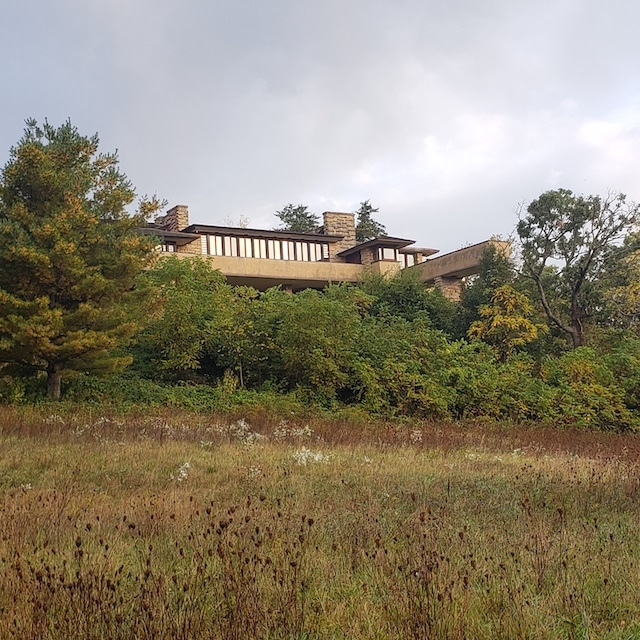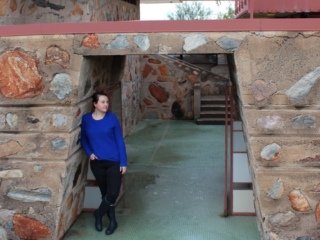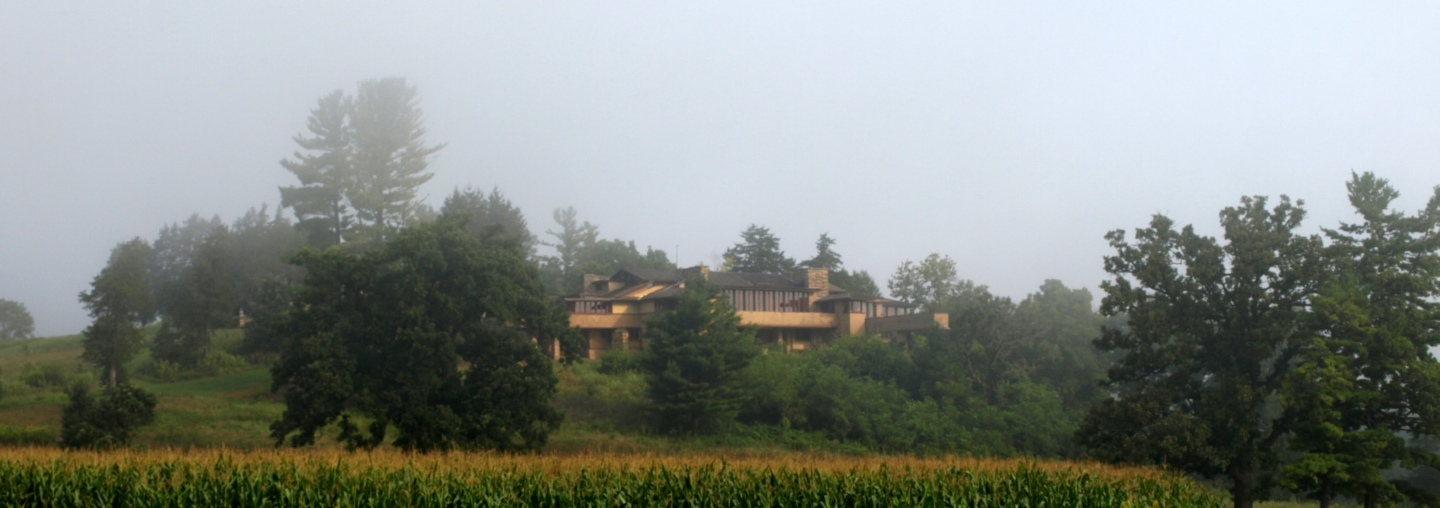
A Taliesin Pilgrimage
Frank Lloyd Wright Foundation | Oct 14, 2020
For nearly a decade, the Frank Lloyd Wright Foundation has invited a graphic designer to work full time on the Marketing and Communication team, which includes living and working at Taliesin West. This summer, 2019–2021 Graphic Design fellow, Rachel Minier, visited Taliesin in Spring Green, Wisconsin for the first time.
There’s a specific feeling and atmosphere I associate with the Midwest in the late summer. The air is heavy with moisture and the scent of something I can’t quite put my finger on. It’s often cool—even chilly—in the early morning, but the afternoon sun beats down on those who dare venture out. In the morning and evening the trees’ shadows stretch themselves long over the ground. It evokes in me a restless anticipation of new adventures.
This is the sensation that enveloped me when I arrived at the grounds of Taliesin on August 23rd. The winding road led me past Taliesin and Midway Barn and climbed the hill toward Tan-y-Deri. An amazing perk of my fellowship with the Foundation was getting to call Tan-y-Deri my home for the next three nights. I was also lucky enough to get to share the experience with my husband, Andrew, who has been by my side during the majority of my visits to other Wright sites around the country. That evening we acquainted ourselves with Tan-y-Deri, the home Wright built for his sister, Jane, and her husband Andrew Porter in 1907–1908. We wandered the surrounding area, taking in the small cottages nearby, the Romeo and Juliet windmill, and the view of Taliesin across the fields of corn.
Being not just a student of graphic design, but also of photography, I brought with me one of my beloved Polaroid cameras and used it to document our stay.
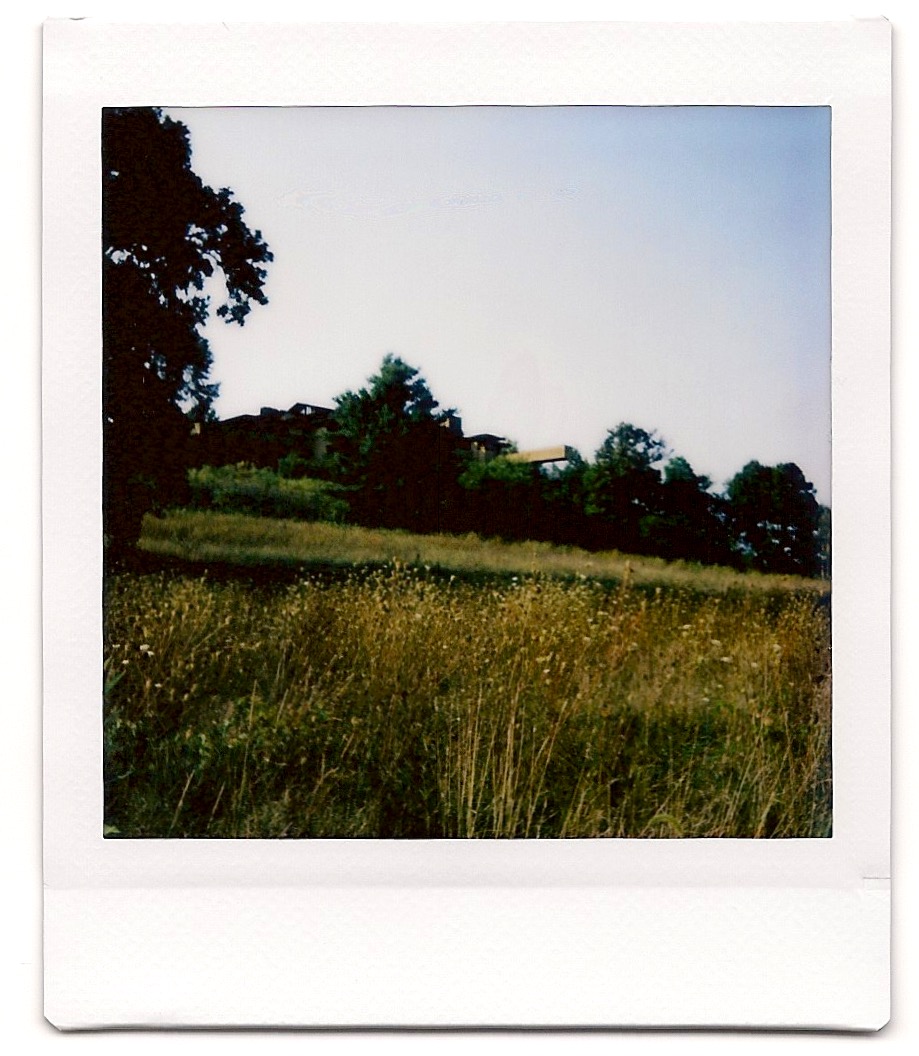
Taliesin from below
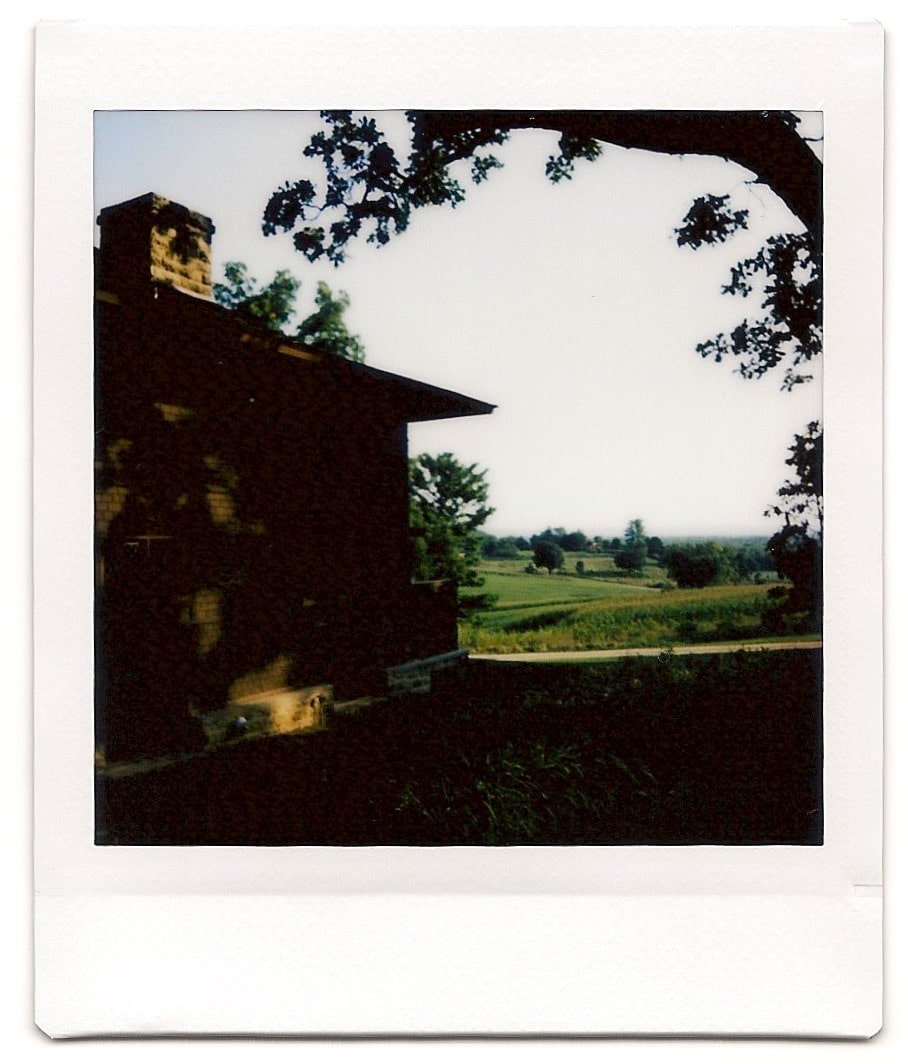
Tan-y-Deri, Welsh for “Under the Oaks”
Early the following morning the grounds were draped in a layer of fog, adding to the already mystical quality of Taliesin. I’m certainly not the only person to believe there’s a spirituality alive at Wright’s structures, but the feeling is particularly amplified at his own homes. Wright once supposed, “You might say that Nature is the God of the architect,” and, to me, nowhere is that more evidenced than at the homes he constructed for himself. That morning, along with Andrew and Ryan Hewson, the Director of Preservation at Taliesin, I toured the main house and surrounding gardens, taking in the parallels between Taliesin and Taliesin West, such as the breezeway and the garden room. I was struck (though I shouldn’t have been) by just how warm and inviting the living room is and could’ve lingered there much longer. Ryan informed me that in the corner of the room, tucked behind one of the limestone columns, is where Olgivanna and Frank Lloyd Wright would take breakfast each morning. The space felt at once intimate and simultaneously ideal for a large gathering.
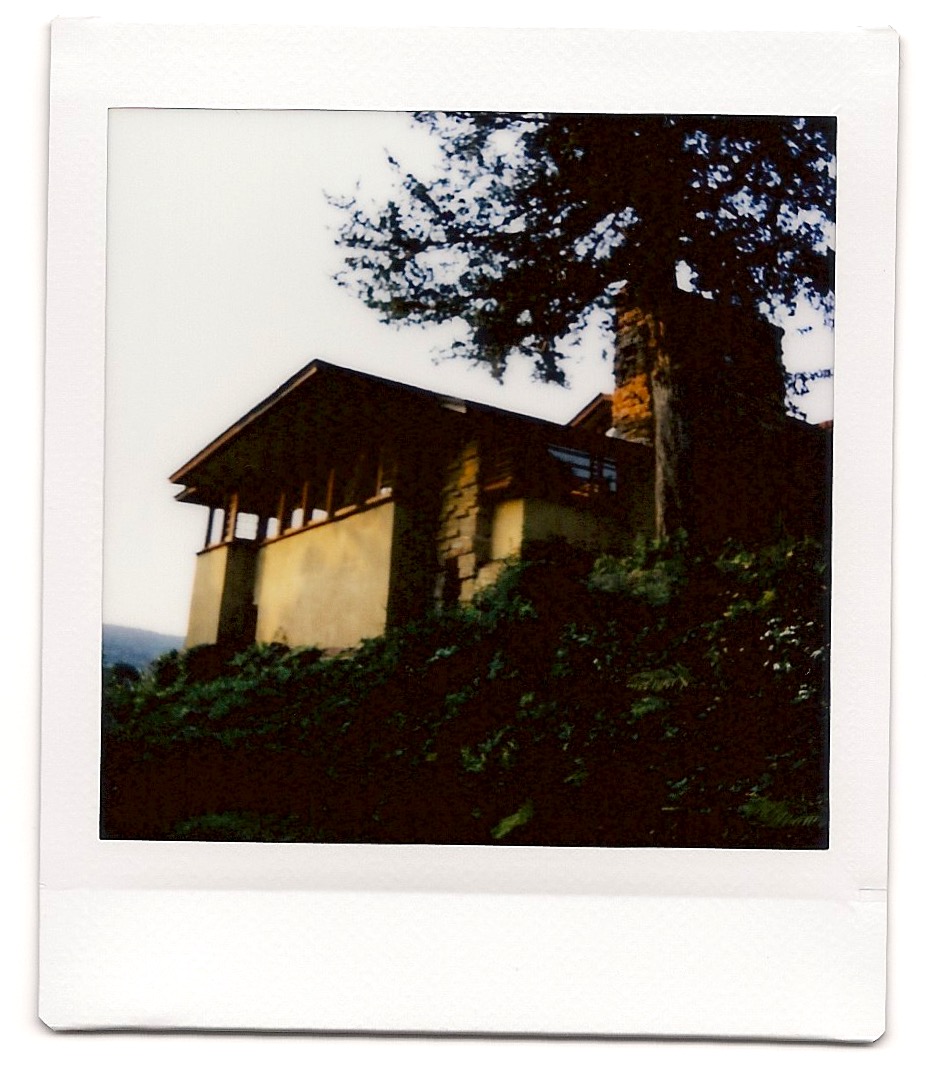
Taliesin at dawn
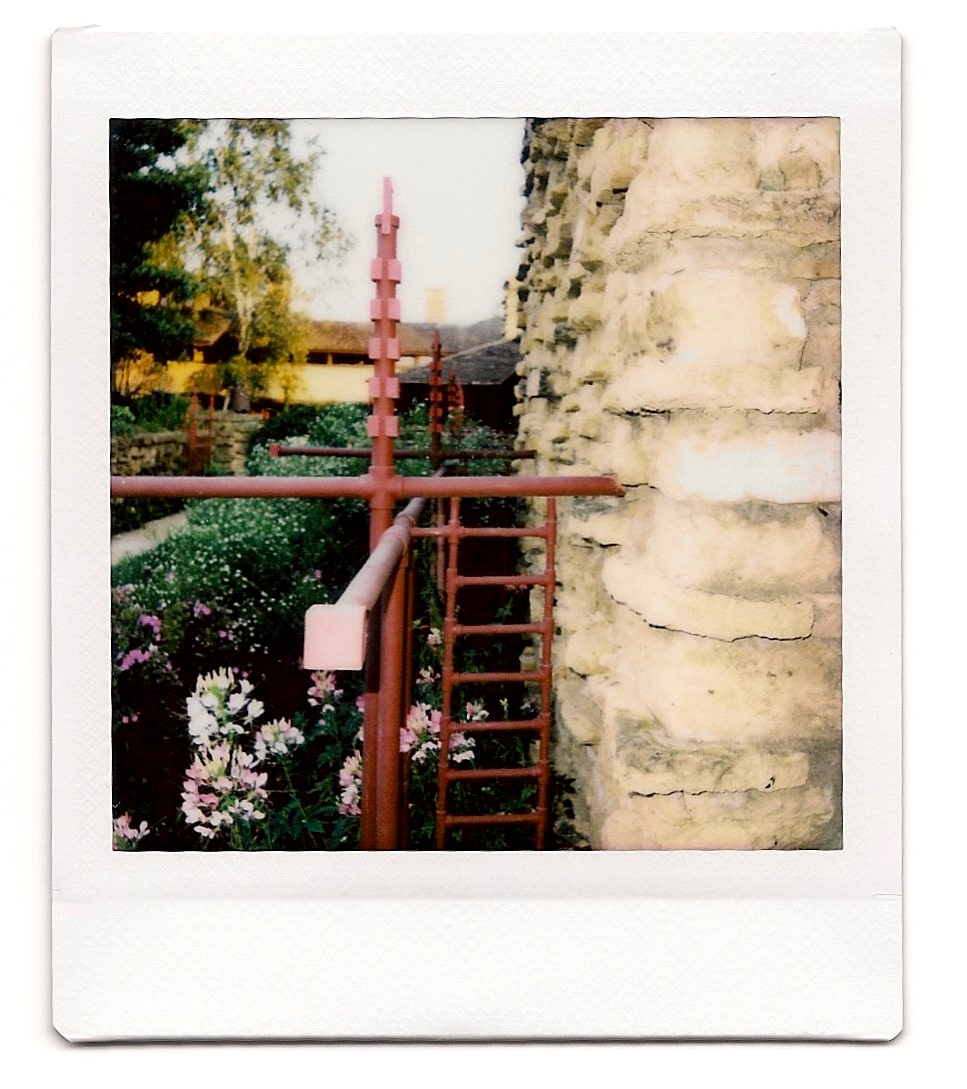
Decorative pipes in the garden at Taliesin
From Taliesin we made the short trek to Hillside Home School, first entering the Hillside Theatre and continuing on into the kitchen, dining room, and drafting studio. Again, there was a sense of something storied here; the historic moments, the lives led on these grounds, and the inspiration and ideas that emerged. Despite largely having the grounds to ourselves, I felt the existence of community still alive across Taliesin in the way I experienced it while living at Taliesin West.
“Wright once supposed, ‘You might say that Nature is the God of the architect,’ and, to me, nowhere is that more evidenced than at the homes he constructed for himself.”
After viewing the Work Song sign and small bedrooms that line the corridor outside the drafting studio, we hiked the hill to the Romeo and Juliet Windmill. It was midday and the temperature was approaching 100 degrees. Nearly pitch-black inside, I largely felt my way up each angled ladder until reaching the final interior landing. At last the light from the balcony door, opened for us by Kyle Dockery, Collections Coordinator at Taliesin, guided me up and out. Both the breeze at the top and the stunning panorama of the Driftless landscape were worth the climb. For those unfamiliar with this region, unlike much of the Midwest, the Driftless area avoided the flattening effects of glacial drift and frequently erupts in beautiful rolling hills and bluffs. It was an incredible sight to take in.

Hillside Theatre
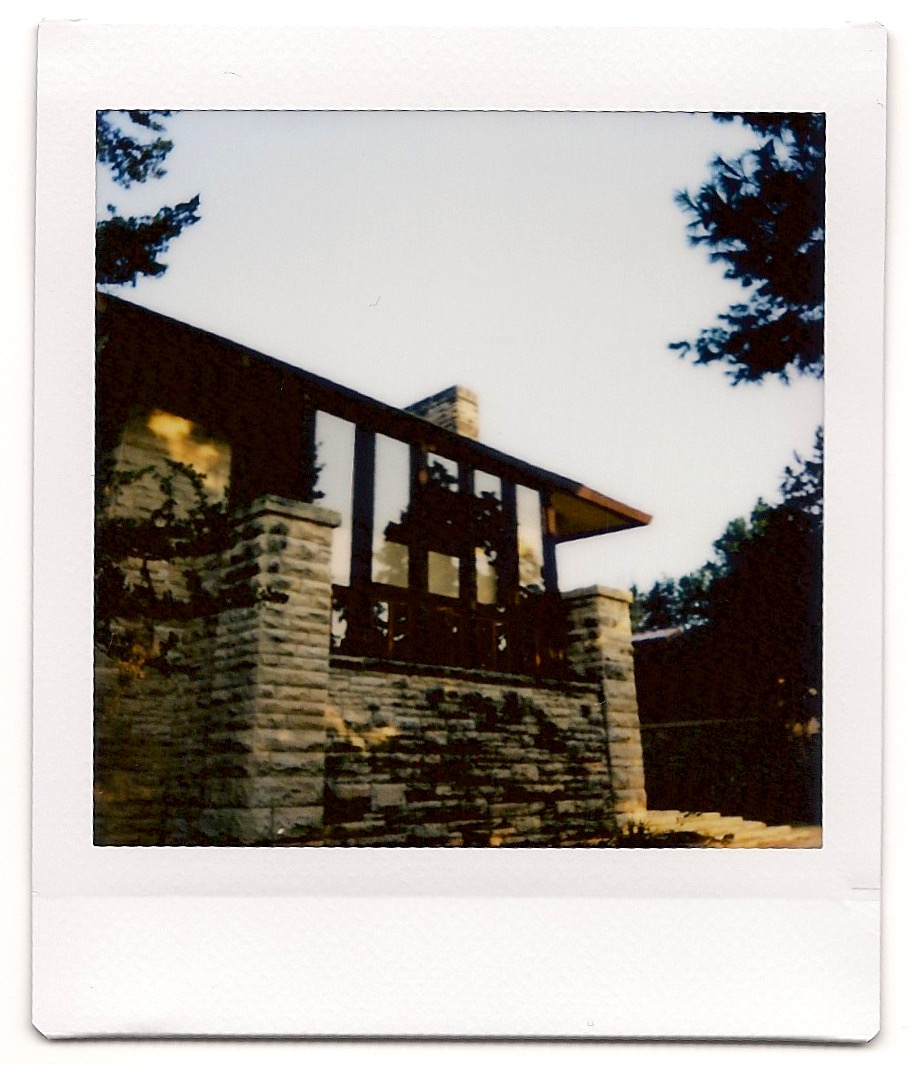
Hillside Home School
I spent the late afternoon sheltering from the heat, then journeyed out once more, exploring the grounds and snapping as many photos as I could before losing the sun behind the hills. Just as at Taliesin West, there’s a certain tranquility that settles over the estate at night. The rumble of passing trucks drifts up from the highway, but trees tower overhead and the distances between Taliesin, Midway Barn, Hillside, and Tan-y-Deri seem to mysteriously lengthen, giving Wright’s Wisconsin home an even more solitary feel.
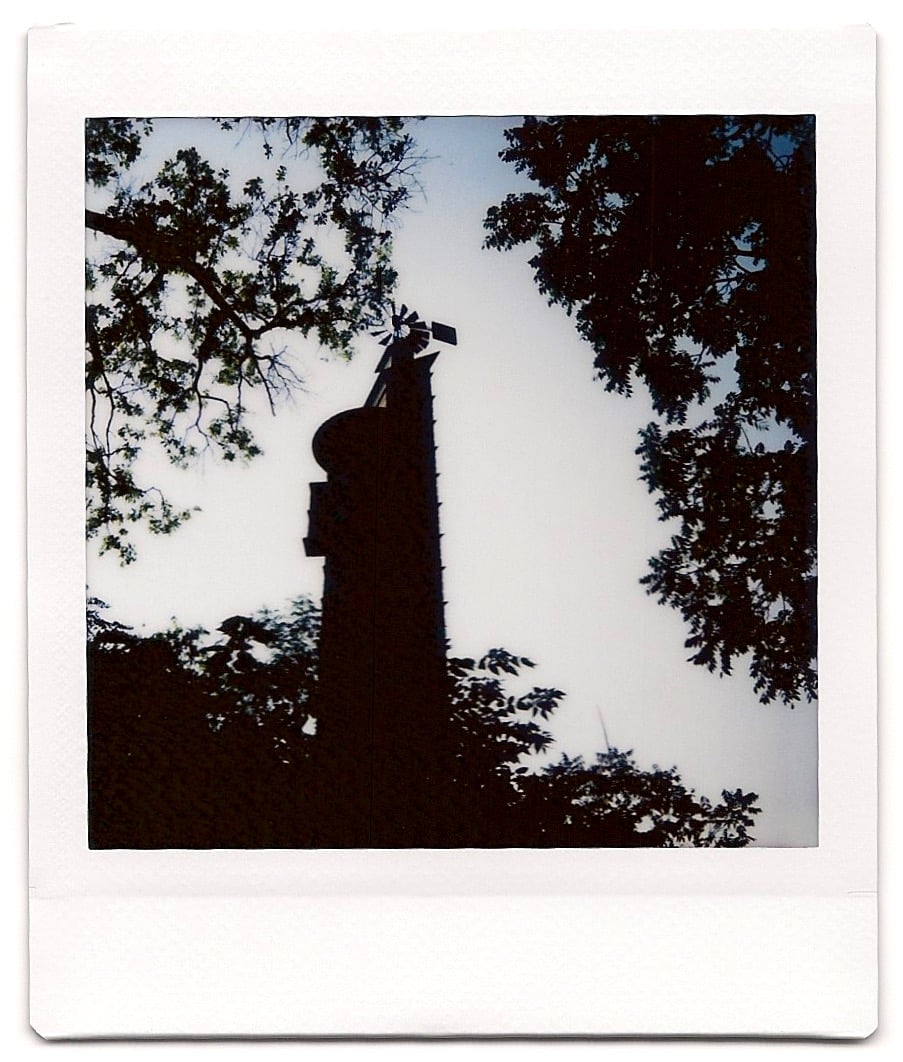
Romeo and Juliet Windmill at dusk
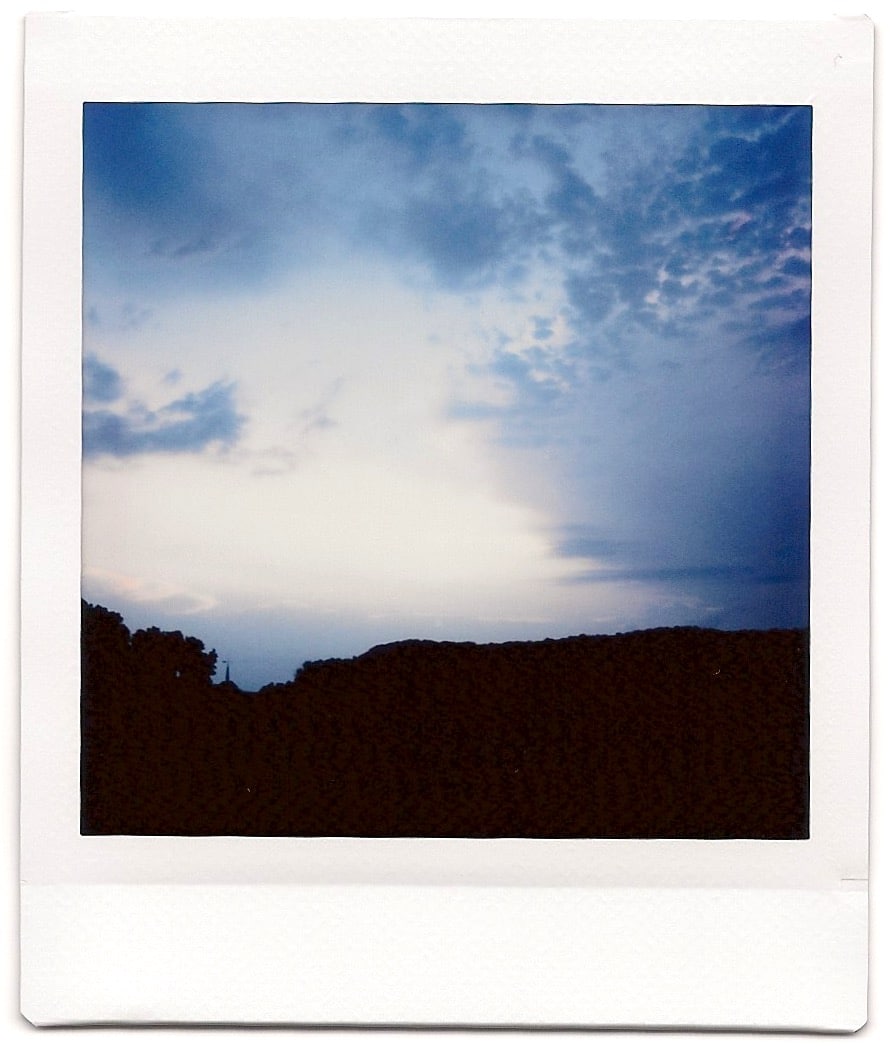
The spire of Midway Barn and the grounds of Taliesin at dusk
The next morning, I met up with Kyle again to tour the archives—a veritable treasure chest. From furniture to fabric to box projects, there was no shortage of fascinating objects to take in. One room had flat files housing remnants found after the fires; bits of china or metal that had survived the blaze. The furniture was a hodge-podge of Wright-designed items, some from Taliesin, but many pieces from other projects. A huge mural designed by Gene Masselink, a graphic designer and Wright’s secretary, for a Spring Green restaurant which had burned down, sat tucked, unassuming, against a wall. Just as with the living room it was difficult to leave, but there was still more to discover. From the archives we meandered through Midway Barn. One of the areas I found most fascinating is known as “The Train.” A former chicken coop, it was turned into a makeshift sleeping area when the need arose (and for those aware of the origins of the bedrooms at Hillside, you might be sensing a pattern). To me, this truly speaks to the spirit and energy of both Taliesin and Taliesin West, and to the apprenticeship under Frank Lloyd Wright. These were, and in some ways remain, unfinished and constantly evolving spaces. It’s a collision of the proverb, “Necessity is the mother of invention” and Wright’s ethos of “Learning by doing.”
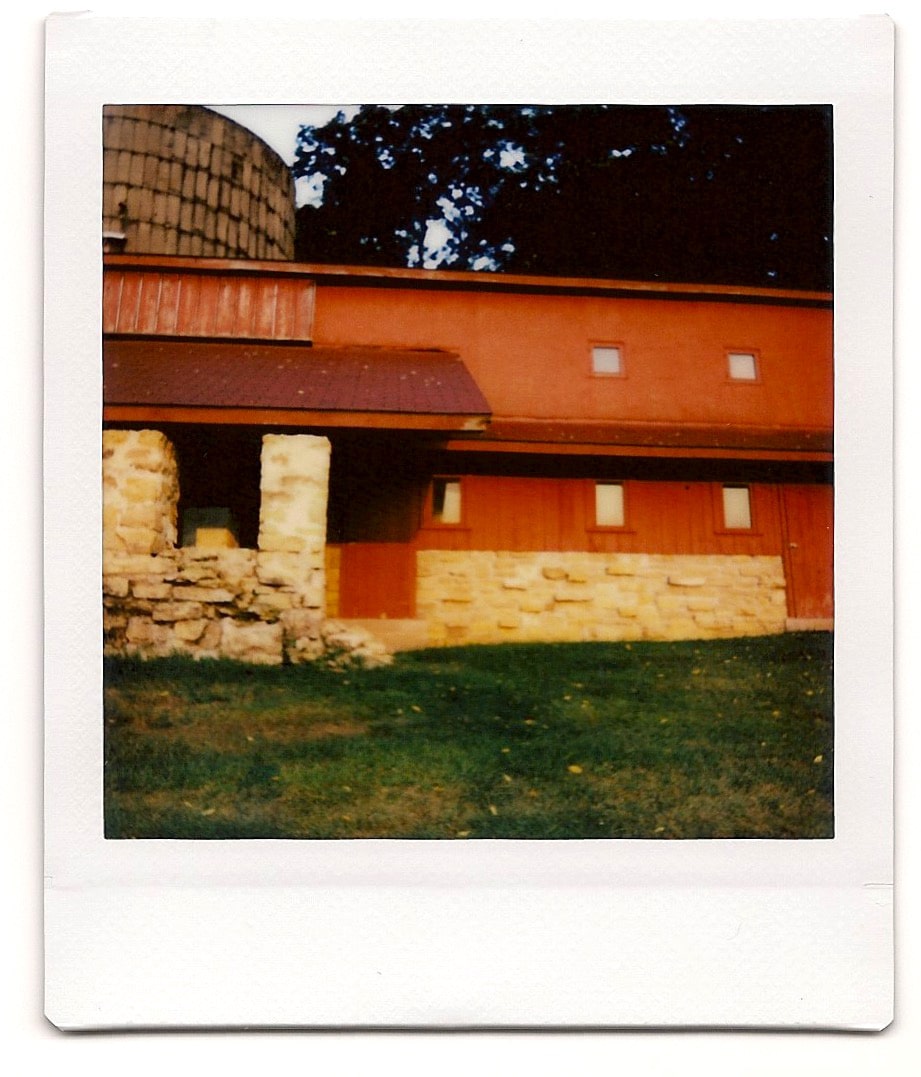
Midway Barn
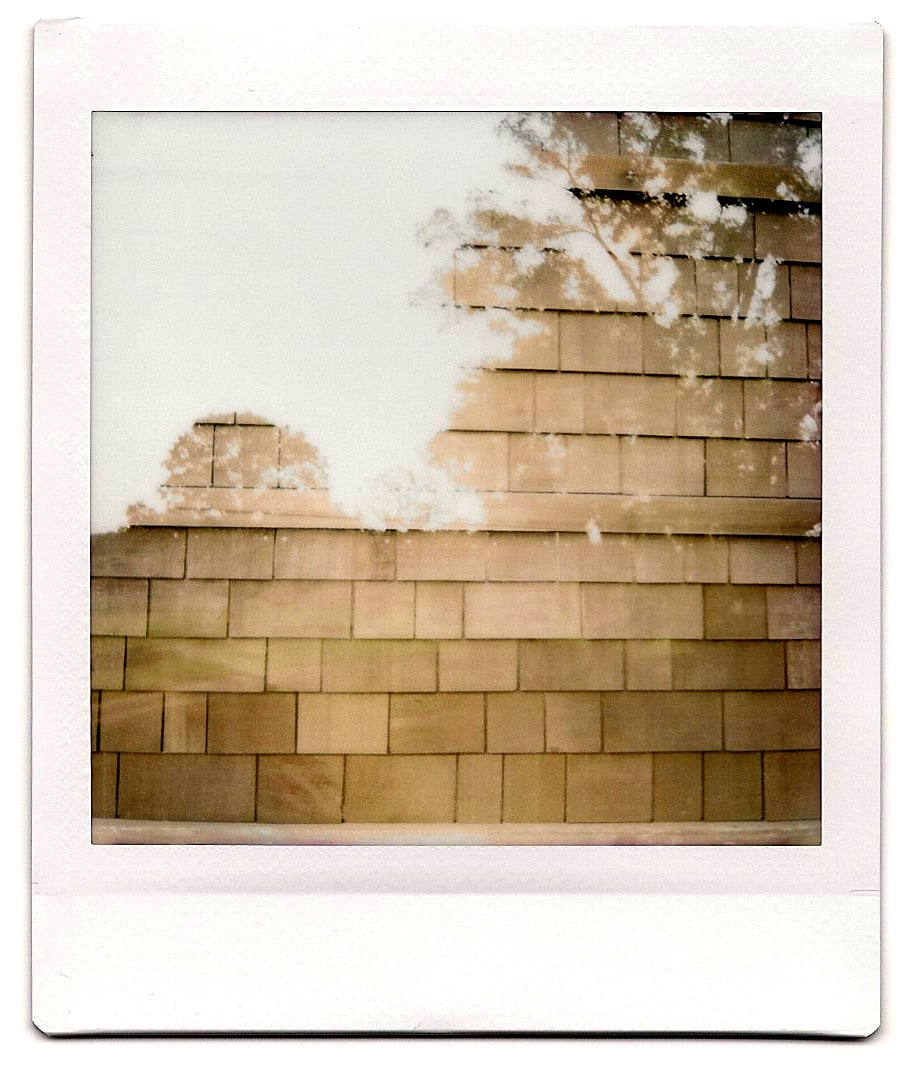
Tan-y-Deri and trees
Following lunch, Andrew and I started down the highway to see Wright’s Wyoming Valley School, designed and built during the last years of his life. It operated as a school for many years, replacing several one-room schoolhouses, until more recently becoming the Wyoming Valley School Cultural Arts Center. Unsurprisingly, it’s currently closed, so we wandered the perimeter. It sits set back from the highway and, like so many of Wright’s structures, low to the ground, so one could easily drive past without ever knowing it was there. It carries many of the hallmark qualities of Wright’s work from the dark red roof with significant overhangs to the repetitive geometric design, in this instance a hexagon. Most notably, a strange (not Wright-designed) pink hippo guards the building.
“These were, and in some ways remain, unfinished and constantly evolving spaces. It’s a collision of the proverb, ‘Necessity is the mother of invention’ and Wright’s ethos of ‘Learning by doing.'”
One of the highlights of my visit was getting to meet with Aris Georges that afternoon. Aris joined the Fellowship in the ‘80s and did much of the graphic design work, including the Quarterly, for many years while also teaching and working as an architect. We had a long, engaging conversation. Aris spoke about how many people work to theorize what Wright might do or think today and emphasized how important it is to simply go back to Wright and listen to the words from the man himself. We discussed Wright’s famous quote of choosing between “honest arrogance and hypocritical humility” and how, whenever possible, one should choose honest humility. One of Aris’ beliefs that has stuck with me over the past weeks is his view of service as an act of leadership. We also touched on the idea that people can sense when you are doing what you love and are drawn to it. There is a rising desire for more authenticity and transparency lately, and I think this ties right back in with the idea of “honest humility.”

Garden at Taliesin
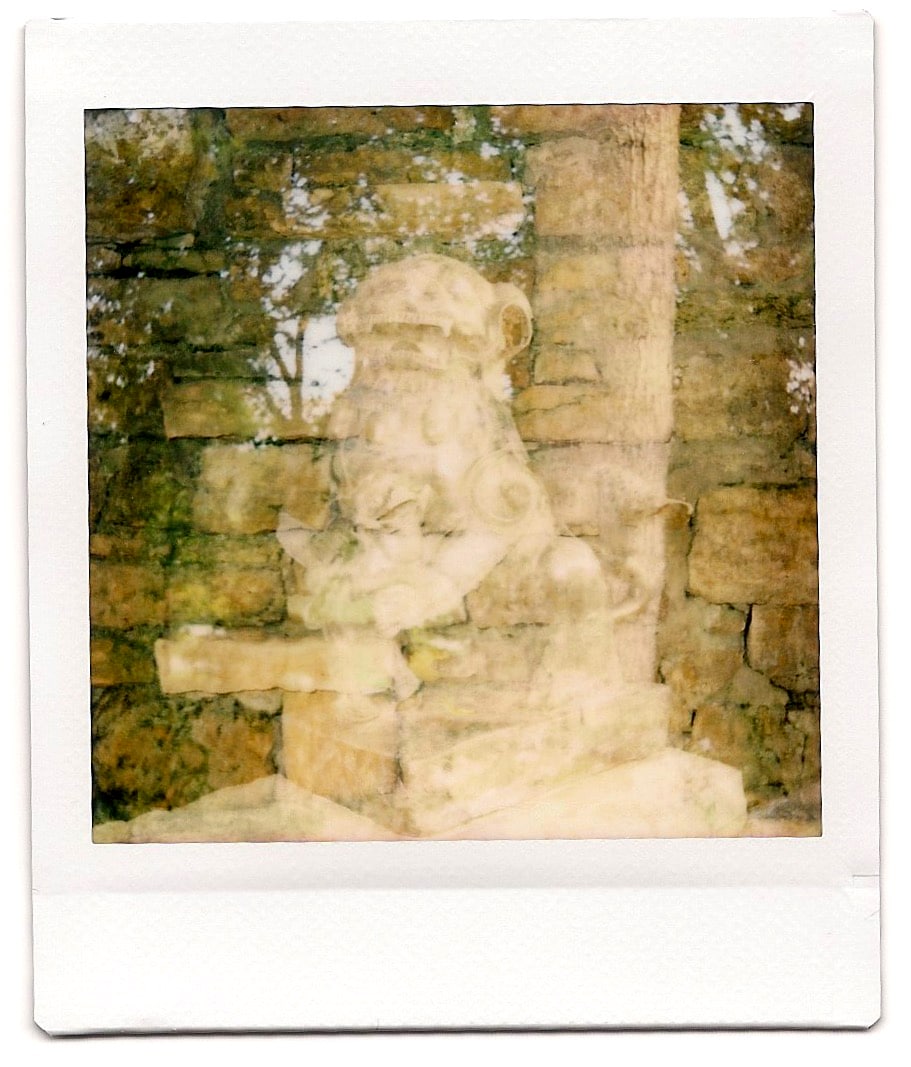
Taliesin limestone and Chinese guardian lion
In the most recent issue of the Frank Lloyd Wright Quarterly, guest editor Jennifer Gray explores the apprenticeship under Frank Lloyd Wright in her article “Against Knowledge Factories.” She cites Wright describing the daily life of the apprentices, “… all hands are there from an early rising bell until all tumble into bed, worn out.” This was exactly my experience during my brief visit to Taliesin, though not due to exhaustion from physical labor, just from trying to pack as much into my time there as possible. At the end of each day I slid into my bed at Tan-y-Deri, ready to rise early in the morning and do it all over again.
Like many others, I’ve spent the spring and summer sheltering-in-place and rarely leaving home. While I feel incredibly fortunate to be able to work from home, I have very much missed the ability to visit cultural spaces that revive and inspire. Being on the grounds of Taliesin and immersed in the history and architecture reawakened a curiosity and creativity in me that felt like it had gone a bit dormant and reminded me how much an impact our surroundings have on us. I can only hope to return soon to those lush, rolling hills and the trill of the sandhill cranes as they fly overhead.
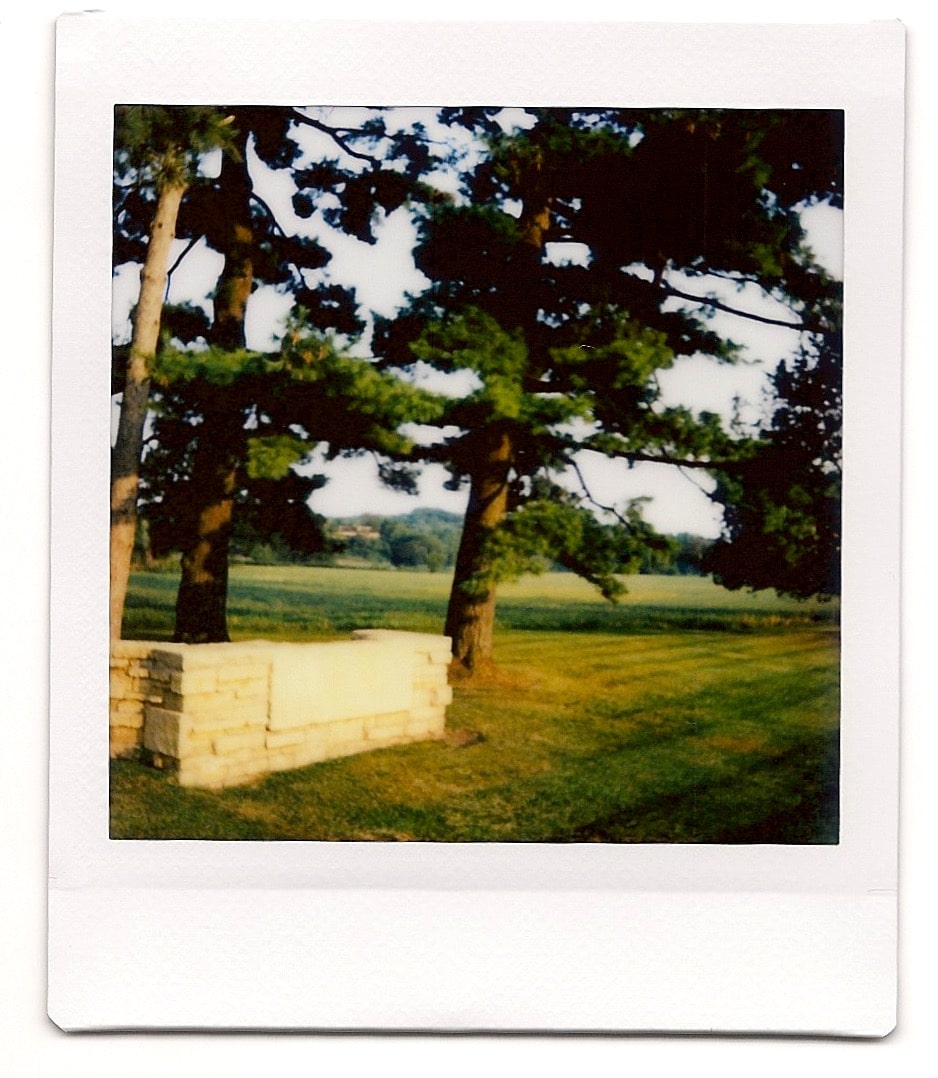
The Taliesin sign; Taliesin visible in the distance

Taliesin limestone and garden
Do you want to experience Frank Lloyd Wright’s two famed homes?
Make the trip to the rolling hills of Wisconsin to see Taliesin
Journey to Arizona’s unforgettable Sonoran desert to see Taliesin West
